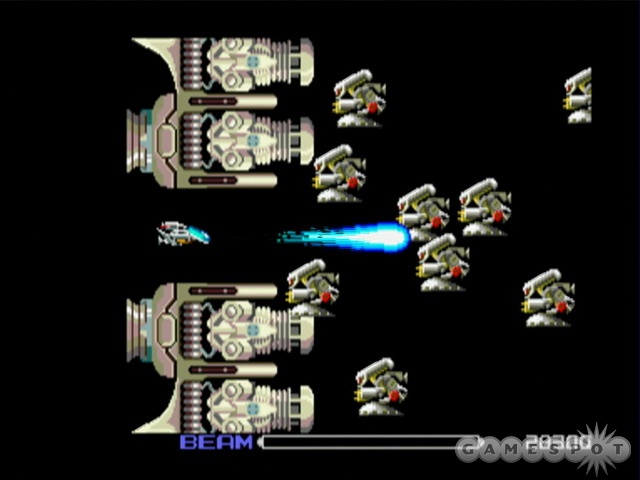The side-scrolling space shooter certainly seems to be the genre du jour for the Wii Virtual Console service right now. It's great to see a long-abandoned genre get another day in the sun, but if you didn't play these old console games back when they came on carts, it can be tough to discern any real differences between them at first blush. This is doubly troublesome with the release of both R-Type and R-Type III: The Third Lightning, a pair of space shooters that rely on roughly the same core gameplay gimmicks to differentiate themselves from still other space shooters. They both remain solid shooters, but R-Type III is slightly easier to recommend, as it improves on some of the concepts introduced in R-Type and also features flashier presentation and a less punishing level of difficulty.

What sets the R-Type games apart from other space shooters is a unique power-up system. By the time R-Type hit the TurboGrafx-16 in 1989, the idea of secondary drones that would hover around your ship, providing extra firepower and protection, was pretty well established. What R-Type did was make it so that you could actually dock the drone onto the front or back of your ship, buffering you from attacks. It also makes it possible to defend from rear attacks, and in a pinch, the drone can be launched across the screen, dealing damage to anything in its path. R-Type III, which was originally a Super Nintendo game, elaborates on the drone concept by giving you a choice of three different types of drones, each providing a slightly different type of protection. Both games also let you charge up your primary weapon by holding down the fire button.
Keeping in mind the conspicuously absent R-Type II, there was a five-year gap between the release of R-Type and R-Type III, and the technical superiority of the SNES over the TG16 is quite apparent here. Both games start off with a pretty average deep-space setting that quickly gives way to sticky biomechanical caverns and other creepy, Akira-inspired elements, but R-Type III does it with a richer color palette and plenty of SNES trademark special effects. Expect to see plenty of crazy parallax scrolling, inventive use of Mode 7 scaling and rotation, much larger, more involved boss fights, and even a spot of crude 3D effects. The trade-off for all that flash, though, is that R-Type III is much more prone to sprite flicker and slowdown. The games share similarly driving musical themes, with R-Type sounding more blippy and R-Type III making heavy, unapologetic use of SNES synthesized guitars.
Despite R-Type III's technical superiority, R-Type might be a better fit for you for several reasons. It's a more challenging game, and while R-Type III takes some time to get warmed up, R-Type throws unforgiving waves of enemies at you from the word "go." There's also the issue of controllers, as R-Type III is a four-button game that requires you to have either a GameCube controller or the Classic Controller to play. Though not as historically significant as something like Gradius, R-Type and R-Type III are both worthwhile genre exercises.



